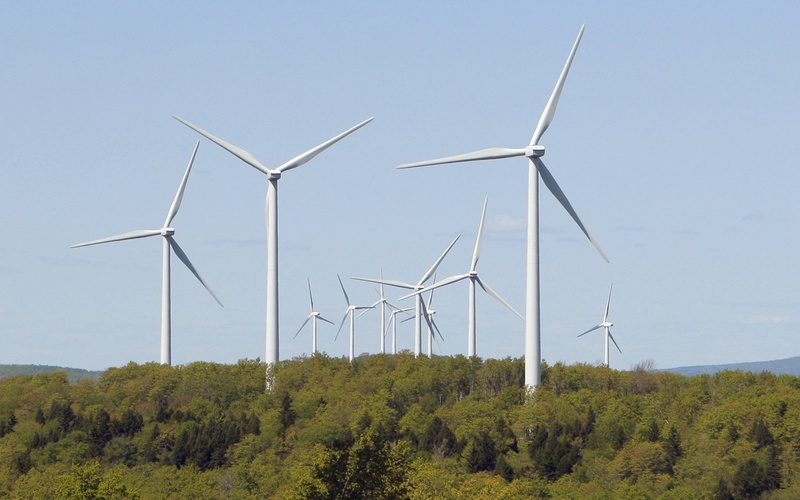BOSTON — New England is decidedly short on coal mines and oil wells, but electricity grid watchers say a recent federal order could help the region finally unlock the power in the energy sources it does have.
A federal order issued last fall is intended to make it easier to construct transmission lines, costly and controversial projects that are notoriously tough to build.
More wires are badly needed in New England to connect customers to the region’s often remote sources of renewable power, which is needed because all six states have committed to using increasing amounts of renewable energy.
To date, the grid managers who plan transmission projects have focused almost exclusively on “reliability” — whether such projects would help keep power flowing when demand is high, such as on a stifling summer day.
But as part of the new FERC order, managers also must plan transmission that helps states meet policy goals, such as increasing renewable power use.
That’s a crucial step to actually getting renewable power generation built, said Seth Kaplan of the Conservation Law Foundation.
“This stuff is not easy,” he said. “We’re going to need the whole portfolio of these solutions.”
On Monday, the Conservation Law Foundation, Americans for a Clean Energy Grid and the New England Clean Energy Council will host a meeting of energy experts and entrepreneurs to discuss the regulatory changes and the importance of expanding transmission.
Massachusetts U.S. Rep. Edward Markey and FERC Commissioner Cheryl LaFleur are keynote speakers and environmentalist Bill McKibben is a panelist at the summit.
The New England states are among 32 nationwide that set at least voluntary goals to increase reliance on renewable energy sources, according to the U.S. Department of Energy.
New Hampshire, for instance, must obtain about 25 percent of its energy from renewable sources by 2025.
Massachusetts must get 15 percent of its power from renewable sources by 2020. And another Massachusetts law requires the state to make an 80 percent reduction in total emissions by 2050, compared with 1990 levels.
The requirements create a need for more renewable power, and wind is New England’s most abundant source of it.
A 2010 report done for grid manager ISO New England said the region’s land and ocean winds are plentiful enough to supply nearly a quarter of its power by the end of the decade, if those winds can be tapped.
But the region’s best winds are in some of its most isolated areas, such as off the coasts and in northern Maine. So potential wind farms there can’t reach population centers without miles of high-voltage transmission lines that will cost billions of dollars.
But since the federal order means that building transmission lines isn’t all about reliability anymore, planners and ISO New England will focus more than ever on reaching that renewable power, including devising ways to pay for it, Kaplan said.
“Figuring out how to pay for things can be a very important step in getting it down,” he said.
More renewable power generation could do more than satisfy state mandates. It also has potential to eventually push down New England’s electricity prices, which are high because it has so little of its own fossil fuels.
In 2009, six of the country’s 12 most expensive states for electricity were in New England, including three of the top five, according to the U.S. Energy Information Administration.
More renewable power in New England would mean more generators are relying on fuels that are free, such as sun and wind. With low to zero fuel costs, those generators can enter low bids on the energy market which ISO New England uses to secure power producers for the following day. The low bidders push out costlier options and suppress prices, said ISO New England spokeswoman Marcia Blomberg.
Still, obstacles to more transmission are significant. The billions in costs fall mainly on ratepayers. Also, clearing the way for miles of high voltage transmission wires antagonizes environmentalists and neighbors.
But Bill White of Americans for a Clean Energy Grid said while transmission costs are initially high, the infrastructure lasts decades, brings down costs, and is a good investment it in the long run. He said transmission costs average just 10 percent or less of the total on utility bills nationwide — electricity generation costs makes up the bulk of the bill.
New collaborative planning processes also mandated under the federal order will allow people to help determine which lines are needed, where they’re needed, and how they help states reach their own goals for things such as more renewable energy, White said. He thinks once that’s understood, the projects will find strong support.
“I understand that may sound a bit optimistic,” White said. “That’s OK; we’re optimistic.”
Send questions/comments to the editors.


